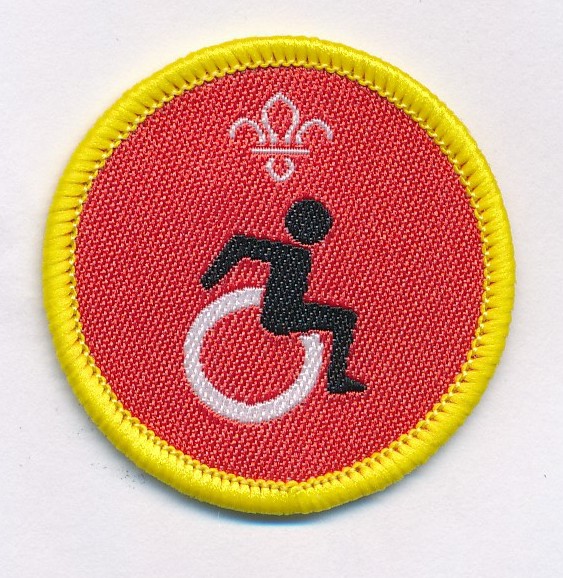Cubs Disability Awareness Activity Badge
To purchase...
To purchase this badge, you need to be a member of a Leadership Team or Support Team. You’ll need to sign in and enter your details, plus your membership number in the Scout ID box.
Read moreYour selection is currently out of stock
Cub Scout Disability Awareness Activity Badge
As Scouts we believe in inclusion, which means everyone is welcome and nobody gets left out. Play your part by learning about additional needs and...
Cub Scout Disability Awareness Activity Badge
As Scouts we believe in inclusion, which means everyone is welcome and nobody gets left out. Play your part by learning about additional needs and disabilities.
How to earn your badge: Choose one thing to do from each of the four lists.
Disability awareness
- Explain what a disability is. What are the different types of disability?
- Research a famous person with a disability.
- Make a poster or write about their life and achievements.
- Visit a local community building like a library, town hall or cinema. How accessible is it for someone with a disability?
- Write down what you find out.
- Show how you could help someone with a disability to make the Cub Promise.
- Think of a different example to the ones in steps 2, 3 or 4.
Physical disability awareness
- Find out about two different aids that can assist a disabled person. How do they help? You could find out about things like wheelchairs, computers, rising chairs or adapted cars.
- Find out about three ways to make it easier for a wheelchair user to use public places, like shops, parks, hospitals or libraries. How could your meeting place be made better fora wheelchair user?
Deaf awareness
- Learn the alphabet using fingerspelling. Show you understand a word communicated to you using fingerspelling.
- Learn a song in Makaton or British Sign Language.
- Explain what equipment a deaf person might use in the home. You might look at special features on things like fire alarms, telephones or TVs.
- Show how you would approach a deaf person and speak to them so they can lip-read.
Sight awareness
- Describe two different ways a blind or visually impaired person can read. You could talk about how they would use computers, Braille or Moon.
- Explain what guide dogs for blind people do. How are they trained?
- Learn and read your name in Braille.
- Show how to approach a blind or visually impaired person. How would you identify yourself?
** Requirements can be adapted to suit each young persons abilities.
Read more
About this product
- Type: Woven with merrow border
- Size: 40mm
£1.99 delivery for orders of badges and woggles only.
Returns - You have 60 days to return an item for exchange or a full refund, excluding sale items.
Helpful links
